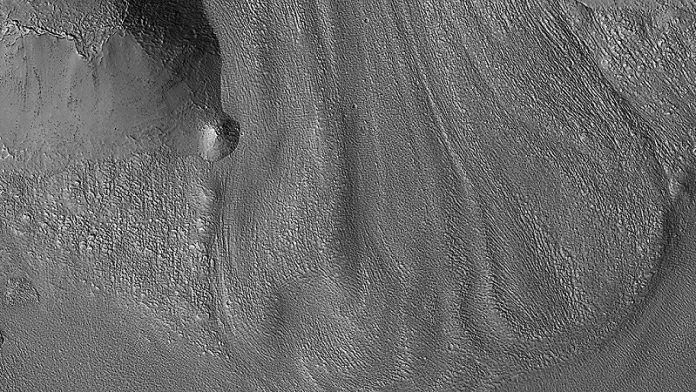
A new study has revealed that many glaciers on Mars are made up of more than 80% pure water ice, hidden beneath a thin layer of dust and rock.
This surprising discovery changes how scientists understand Mars’ past climate and boosts the possibility of using these ice deposits as a water source in future human missions to the planet.
For years, scientists believed that the slow-moving features seen on Martian slopes—often resembling frozen flows of honey—were mostly made of rock, with only a little ice mixed in.
But new findings, published in the journal Icarus, show that these formations are actually full of ice, covered by only a thin layer of debris.
The study was led by Yuval Steinberg, a recent graduate from the Weizmann Institute of Science in Israel. He worked with two senior researchers, Oded Aharonson and Isaac Smith, from the Planetary Science Institute in the U.S.
These researchers wanted to figure out just how much ice was really inside these dust-covered glaciers.
Past research on these glaciers used different methods at different sites, making it hard to compare results. So the team decided to analyze five glacier sites across Mars using a consistent scientific approach.
They measured two radar-related properties: how fast radar waves move through the glacier material and how much energy those waves lose along the way. These measurements help scientists figure out the ratio of ice to rock beneath the surface—something that can’t be seen just by looking.
To do this, they used SHARAD, a radar instrument on NASA’s Mars Reconnaissance Orbiter. This tool helped them collect detailed data from glaciers in various parts of Mars, even from sites that had never been fully studied before.
What they found was remarkable: all five glaciers, even those in opposite hemispheres, showed similar ice purity levels.
This means the way these glaciers formed and stayed frozen over time is likely the same all over the planet. It suggests that Mars either went through one huge glaciation period or several similar ones in its past.
This discovery doesn’t just help scientists better understand Mars’ history—it could also support future Mars missions. If astronauts can access clean water ice beneath the surface, they won’t have to bring as much water from Earth, which could make missions safer and more efficient.
The researchers now plan to study more glaciers across the planet to build a clearer global picture of these icy formations and what they can tell us about Mars, past and future.



